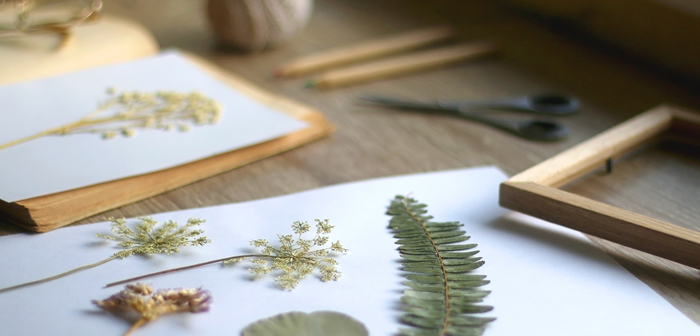There’s something magical about preserving the delicate beauty of flowers. Think back to those days spent in the garden with your family, picking the brightest, freshest blooms to bring inside. Being able to preserve these flowers will help keep that memory alive. Whether you want to create beautiful art, keep mementos from special occasions, or explore a new hobby, pressing flowers is a delightful and rewarding activity.
Pressed flowers have a timeless charm and can be used in various creative projects. If you’re new to flower pressing, don’t worry. This guide will walk you through everything you need to know to get started. We’ll discuss selecting the best flowers and how to press them properly. Let’s dive into the beautiful world of flower pressing.
Choosing the Right Flowers for Pressing
Selecting the right flowers is the first step in creating beautiful pressed flowers. Always pick flowers close to full bloom and free from blemishes or dark spots. The best time to collect flowers is in the morning after the dew has dried. Make sure the flowers are dry before pressing them, as damp flowers can become moldy.
If you’re using flowers from a bouquet, keep them in water until they’re ready to press. Cut the stems at an angle and place them in a vase with flower food to maintain freshness. Remember to replace the water daily and remove leaves below the water line.
For large flowers with layered petals, consider separating the petals before pressing and then reconstructing the flower later, if desired.
Seasonal Flower Picking
Different seasons offer a variety of flowers that are perfect for pressing. In the spring, you can find snowdrops, dwarf daffodils, fritillaries, and primroses. These flowers are colorful and easy to press. Summer brings an abundance of wildflowers like buttercups, clover, red campion, and stitchwort. These simple flowers often press the best. During autumn, look for vibrant leaves from trees and plants like peony, heuchera, and cyclamen. These leaves can add a splash of color to your pressing collection.
Preparing Flowers for Pressing
Wildflowers tend to wilt quickly, especially in summer. To keep them fresh, bring a plastic, lidded tube filled with water on your flower-picking trips and place the flowers immediately after picking. Alternatively, wrap them in a kitchen towel or fabric soaked in water.
You can revive wilted flowers by cutting the stems at an angle and plunging them into slightly warm water. Avoid pressing flowers when wet or damp; they may stick to the pages and get damaged. Lay them out on a kitchen towel to dry, and lightly blot them with absorbent paper to remove excess moisture.
The Pressing Process
Pressing flowers is a simple process, but it requires patience. Here’s a step-by-step guide to help you get started:
- Collect Your Supplies: You will need books, a newspaper, a card, PVA glue, and a pen.
- Pick Your Flowers: In a spot where you have permission, carefully pick a flower section. Avoid damaging other flowers or taking too many.
- Prepare the Book: Open a book and line it with a newspaper. Place your flowers as flat as possible on the page.
- Press the Flowers: Carefully close the book and weigh it down with heavy books. Store this pile in a warm, dry place and check on your flower specimens daily.
- Remove the Flowers: Carefully remove your flowers from the book once they’re dry.
Once the flowers are dry, you can begin using them in your projects. However, to avoid mold or damage, ensure they’re entirely moisture-free before starting.
Tips for Effective Pressing
Not all flowers are easy to press. Some, like bluebells, lose moisture longer and may become moldy. Bulkier plants are also more challenging to press well. To ensure even weight distribution, make sure every part of the plant is in contact with the newspaper.
Drying flowers quickly can help preserve their color. Place your plant specimen next to a radiator or central heating boiler to provide a steady flow of warm air. You can also warm the newspaper before using it to drive off moisture.
Newspaper works well as an immediate covering for your plant specimen because it’s fairly absorbent and has anti-fungal properties. If you’re pressing a succulent plant or one with a large stem, use a kitchen roll to absorb the extra moisture on the first day and discard it.
If you’re pressing multiple specimens at once, add extra paper and card to ensure that every part of the plant is directly pressed to avoid shriveling.
Creative Uses for Pressed Flowers
Once you’ve mastered this technique, there are many ways to use them creatively. Here are some ideas:
- Framed Pictures: Create beautiful artwork by arranging pressed flowers in a frame.
- Bookmarks and Photo Frames: Decorate bookmarks and photo frames with pressed flowers.
- Cards: Make unique greeting cards for friends and family using your pressed flowers.
- Herbarium Sheets: Use pressed flowers to learn about plants in your local area and how to identify them. Make a collection recording the plants growing in your garden.
To create herbarium sheets, lay out the plant to be pressed to look natural. Arrange the leaves so both surfaces can be seen, as each side may contain essential features for identifying the plant.
Add a label with information about the specimen, including the plant’s name (if known), the location and date of collection, and the collector’s name. This data transforms the specimen from being purely aesthetic to scientifically valuable.
Pressing Matters: Your Flower Journey Awaits
Pressing flowers is a delightful and rewarding hobby that allows you to preserve the beauty of nature. Whether you’re creating art, keepsakes, or a botanical collection, knowing how to press flowers properly is essential. Remember to choose the right flowers, prepare them correctly, and use the proper techniques for pressing. With patience and practice, you can create stunning pressed flower projects.
Ready to start your flower pressing journey? Now that you know how to press flowers, it’s time to gather your supplies and begin creating your own beautiful pressed flower masterpieces. Happy pressing!




